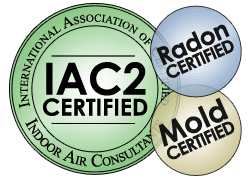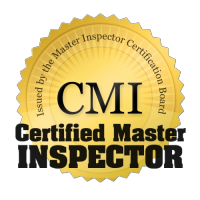 |
Home Maintenance Resources
NACHI, the National Association of Certified Home Inspectors – www.nachi.org
Known Product Related Failures - Search for product recalls which may be safety hazards
http://www.cpsc.gov
CPSC product recalls by type - http://63.74.109.29/cgi-bin/recalldb/prod.asp
U.S. Environmental Protection Agency (EPA) - epa.gov
Radon Zone Map - EPA - http://www.epa.gov/iaq/radon/zonemap.html
Indoor Air Quality (IAQ) - http://www.epa.gov/iaq/
Carbon Monoxide: Answers - http://www.coheadquarters.com/CO1.htm
How Carbon Monoxide Effects Humans - http://www.inspect-ny.com/hazmat/asgasinf.htm
Septic systems Information - http://www.inspect-ny.com/septbook.htm
Water testing Information - http://www.inspect-ny.com/water/watrtest.htm
Hometime - http://www.hometime.com/
Do It Yourself. - http://www.doityourself.com/
Today's Homeowner / This Old House - http://www.thisoldhouse.com/toh/
House Detective - http://housedetective.com/index.shtml
Home and Garden Television - http://www.hgtv.com/
Improvenet.com - http://www.improvenet.com/index.html?src=homeheroLandscapeUSA
Landscaping - http://www.landscapeusa.com/default.asp
Lowe's - http://www.lowes.com
The Home Depot - http://www.homedepot.com
Ace Hardware - http://www.acehardware.com/index.asp
Water Heater Safety Information - http://www.thisoldhouse.com/toh/heatingcooling/article/0,13422,214930,00.html
Bradford White Water Heaters - http://www.bradfordwhite.com/default.asp
Water heater Help from A.O. Smith. - http://www.hotwater.com/frame.html?topage=techhome.htm
State Industries Water Heaters - http://www.stateind.com/
Appliances
Appliance Buying Guide - http://www.aham.org/consumerhome/home.cfm
Installation and Repair Information - http://www.doityourself.com/appliance/
Recalled Appliances - http://www.appliancerescue.com/sandiego/recalls/recalls03112002.html
More Recalled Appliances - http://www.cpsc.gov/cpscpub/prerel/category/appliance.html
Building Materials
Siding Claims Services - http://www.homeclaimservices.com/
More Siding Claims Services - http://www.sidingclaims.com/
Class Action Lawsuits Information - http://www.hadd.com/casuits.html
Masonite (r) Siding - http://www.masoniteclaims.com
EIFS Consumer Advocate Site - http://www.eifsfacts.org
More EIFS Information - http://www.gahi.com/eifshome.htm
Swimming Pools
Pool Safety Tips for Children - http://www.aap.org/family/tipppool.htm
Pool Safety Information - http://www.cpsc.gov/cpscpub/pubs/chdrown.html
More Pool Safety Information - http://www.cdc.gov/health/spsafety.htm
Operating Your Pool - http://www.poolmanual.com/
Toilet Information - http://www.toiletology.com/index.shtml
Polybutylene Piping information - http://www.plumbing911.com/
Class Action Settlement for Polybutylene Piping - http://www.pbpipe.com/index1.htm
Univ. of Arizona study on Polybutylene Piping - http://ag.arizona.edu/AZWATER/awr/nov94/leaks.html
Aluminum Wiring - http://www.inspect-ny.com/aluminum.htm
Federal Pacific Panel Box Information - http://www.inspect-ny.com/fpe/fpepanel.htm
More Information about Federal Pacific Panel Boxes - http://www.inspect-ny.com/fpe/CPSCsummary.htm
Locate A Chimney Sweep - http://www.csia.org/
Heating with Wood - http://www.woodheat.org/
Chimney Safety and Care - http://www.chimneys.com/
Wood Stoves: Installing and Operating - http://www.cdc.gov/nasd/docs/d000101-d000200/d000132/d000132.html
Chimney and Fire Investigation Services - http://f-i-r-e-service.com/f-i-r-e-service/
Troubleshooting Your HVAC - http://www.hvacwebtech.com/
Help for Home Heating Systems - http://www.heatinghelp.com/
Commonly Reported HVAC Problems - http://www.hannabery.com/faq.shtml
"Everything You Want To Know About MOLD"
http://www.epa.gov/iaq/pubs/moldresources.html
Termites-- Identification, Life Cycle, Habits, and Control
http://ohioline.osu.edu/hyg-fact/2000/2092.html
Information on septic systems, drinking water, hazardous wastes, recycling, wetlands, underground tanks, lawn and garden and air quality. http://www.state.ma.us/dep/consumer/consumer.htm
Since 1982, they have provided unbiased coverage of products, materials, and building techniques http://www.jlconline.com/
Flood Insurance Information, Flood Maps, Urban Search-and-Rescue, Fire Prevention
http://www.fema.gov/
There are many different roof types, and every roof will wear differently relative to its age, the number of its layers, the quality of its material, the method of its application, its exposure to direct sunlight or to other prevalent weather conditions, and its maintenance. There are two basic roof types, pitched and flat. Pitched roofs are the most common, and the most dependable. They are typically finished with composition shingles, or concrete, composite, Spanish, or metal tiles that have a design-life of forty to fifty years, and gravel roofs that have a lesser pitch and a shorter design-life of ten to fifteen years. These roofs may be layered, or have one roof installed over another, which is a common practice but one that is never recommended because it reduces the design-life of the new roof by several years. Layering is not always obvious. I know of a case in which after escrow closed, when the new owner was in the process of adding an addition, it was discovered that the roof actually had three layers, which the local building inspector insisted had to be removed before the addition could be tied into the existing roof. The roof had been indexed; that is, successive layers of shingle had been cut back to a point above the top- plate, and were not readily evident in a non-invasive inspection.
Roof leaks usually result as a consequence of neglect and poor maintenance; that explains why they need to be maintained and why I will not endorse any that are not absolutely perfect. There are a wide variety of roofing materials, some better than others. Always ask the seller about the history of the roof or, better yet, on any home that is over 3 years old, obtain a roof certification from an established local roofing company.
What can you expect from your North Idaho home and mold inspection?
- A detailed, concise PLATINUM Inspection
- Complete Satisfaction Guarantee
- North Idaho’s Certified Master Inspector Team®
- Free Visual Mold Inspection by a Certified Mold Inspector
- We "Meet or Beat" the published rates of ANY other Certified Master Inspector® Team within 100 miles!
Home and Mold Inspections in the Greater Coeur d'Alene Area
Referred by the area's most concerned Real Estate Agents
North Idaho’s MOST TRUSTED Home Inspectors:
Inspected Once, Inspected Right
Russell Spriggs is North Idaho's first Certified Master Inspector. Russell's abilities to perform home inspections / mold testing, and ethically serve you, have been certified and recognized by an independent Certification Board (www.CertifiedMasterInspector.org). Russ serves as the President of the Idaho State Chapter of the InterNational Association of Certified Home Inspectors(InterNACHI) and is the past President of the Spirit Lake Area Chamber of Commerce.
Coeur d'Alene Home Inspectors guarantee you that we are here for the long haul to serve our community in the best way possible and promise you a detailed, quality home and mold inspection that includes a money-back satisfaction guarantee!
We are your Independent, Third-Party Home Inspectors throughout North Idaho, and bring over 50 years of Construction, Instruction and Home Inspection experience to your doorstep. This unique blend of professional expertise is drawn upon to conduct a thorough examination of your home’s construction and equipment. Your professional home and mold inspection is informative, educational, and safety-oriented. It is conducted in accordance with Standards of Practice criteria established by the world’s largest professional Home Inspectors’ association, the InterNational Association of Certified Home Inspectors.
Our job, as your North Idaho Home Inspector, is to determine whether the areas being inspected are functional and safe. Neither buyer, seller nor agent has any reason to be apprehensive about an honest Home Inspection. Homes being inspected do not "Fail". You are invited to join us after we investigate every major component of your investment. While we inspect, photograph and report, we are your eyes to help you LEARN your new home - from foundation to roof, the home's plumbing, electrical, heating systems and more!
A Coeur d'Alene home and mold inspection is no different than a Hayden home inspection, or a home inspection in Post Falls. The difference is in the home inspector. Remember, In Idaho, anyone with a flashlight and a stepladder may call themselves a “home inspector”. Beware of self-proclaimed “certifications”! Only InterNACHI Home Inspectors must successfully pass an examination before being accepted and Certified; over 70% of the applicants fail the exam. Many other inspector "societies" simply allow applicants to send in their membership fee, with no prior experience or testing.
What to expect from your Idaho Home Inspectors
Your Certified Home Inspection comes with this warranty:
- Honest Reports
- Up-Front Pricing
- Inspected Once, Inspected Right
- A Money-back guarantee.
- 24-Hour Emailed Report Delivery
- Written Informative and Educational Narrative Report;
- IAC2 Certified Visual Mold Inspection;
- An easy-to-read Summary Page;
- Full Photo Documentation.
Contact your Coeur d’Alene home and mold inspector to schedule your home inspection in Hayden, Post Falls, Coeur d'Alene, Kellogg, Sandpoint and all of North Idaho!




